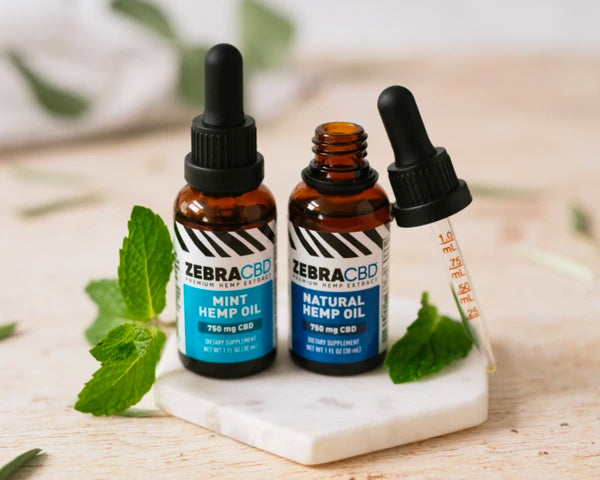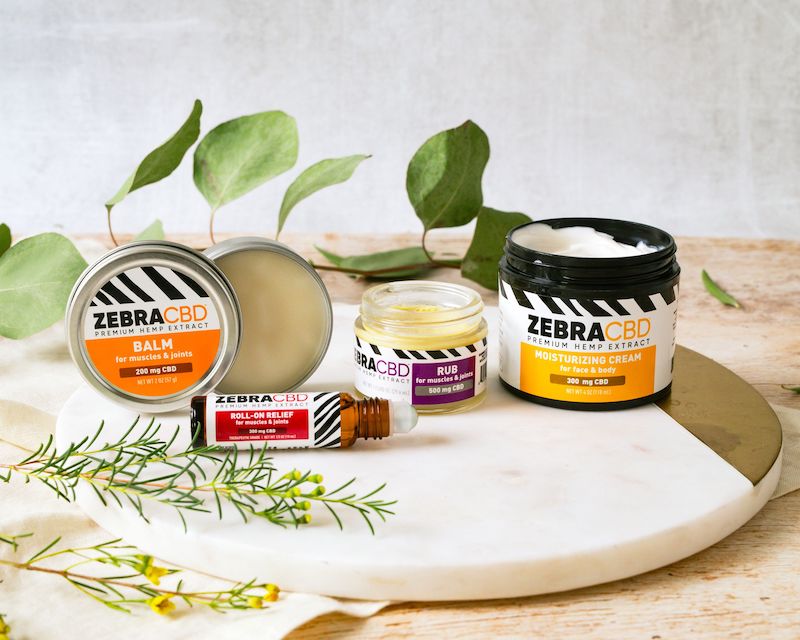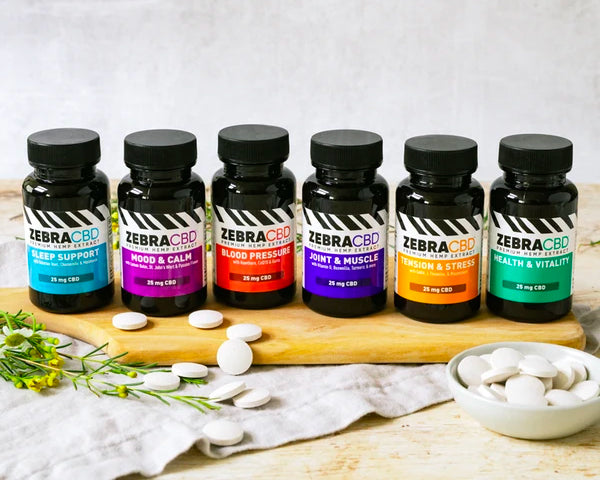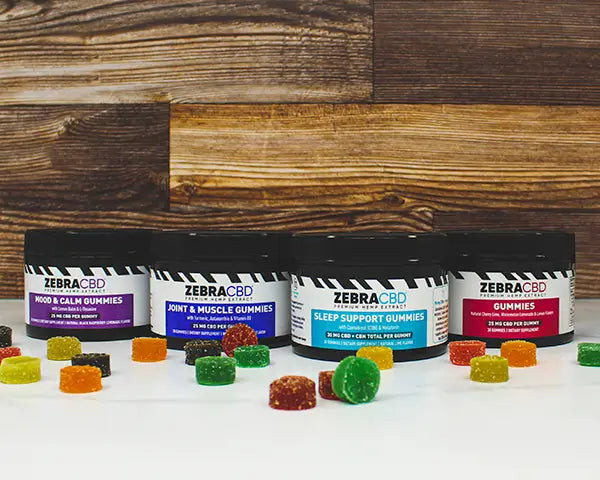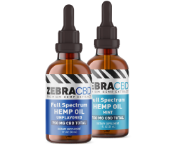
As we age, we’re not the agile, cart-wheeling children we once were. Over time, muscle tissues weaken, tighten and lose a lot of their flexibility. As you rise from a chair, you may find yourself with knee pain , as well as other pain that’s made it increasingly more difficult to do daily tasks, such as cleaning or gardening.
That said, people of all ages and fitness levels can experience both muscle pain and joint pain, too, particularly after exercise. If you’ve injured yourself during your gym session, you may experience tenderness, swelling or even bruising. Stiffness is also fairly common after partaking in a new or strenuous workout.
While there are medications out there to manage post-workout muscle tension, there are also more natural options for those seeking a health-conscious solution. CBD is one of them. While it won’t directly address the primary cause of the injury or pain, it may help relieve symptoms of a workout-induced strained and sore muscles
What Is CBD?
The cannabis plant contains a variety of compounds called cannabinoids. These compounds include cannabidiol (CBD), tetrahydrocannabinol (THC) and cannabinol (CBN), among many others. While THC is known for its psychoactive effects and CBN may help support healthy sleep cycles, CBD is recognized for its potential therapeutic benefits without causing a "high."
CBD is a non-intoxicating compound that’s found in hemp plants. So, what sets hemp plants apart from marijuana plants? The U.S. legislative branch. In other words, the difference is purely legal and both are considered cannabis.
Hemp plants, which contain no more than 0.3% THC, were legalized for manufacturing, distribution and sale after the government passed the 2018 Farm Bill. Effectively, CBD was federally legalized, too. Marijuana plants, on the other hand, contain more than 0.3% THC and are used to produce medical and recreational marijuana products, which do produce a “high.”
While laws differ from state to state, you’ll likely see a variety of CBD products on store shelves. These may include:
- CBD topicals, such as lotions, balms, creams, rubs and roll-ons
- CBD edibles, including CBD gummies, desserts and beverages
- CBD oils or tinctures
- CBD capsules or tablets
Of these CBD products, there are three types to choose from:
- Full spectrum CBD – Full spectrum CBD contains all the products found in a cannabis plant. That is, all cannabinoids, terpenes and flavonoids. Yes, that means THC, too. However, there are only very small amounts of the psychoactive compounds since, legally, these products cannot contain more than 0.3% THC. That said, the combination of each of these compounds is believed to have an entourage effect. In other words, the ingredients may work together to make the CBD more potent and therefore, more effective.
- Broad spectrum CBD – Broad spectrum CBD contains all the cannabis plant compounds, except for THC. That means it may be an ideal option for athletes looking for a THC-free CBD option, while still benefiting from the additional cannabinoids, flavonoids and terpenes.
- CBD Isolate – CBD Isolate is a pure form of CBD, meaning there are no additional compounds.
CBD and the Endocannabinoid System
Whether you choose hemp pills, CBD gummies for painor even CBD cream typically doesn't matter, as each type of CBD interacts with the body in the same way. Namely, through the endocannabinoid system (ECS). The ECS extends throughout the body and brain. Its primary role is to maintain homeostasis, or equilibrium, throughout the body. That being said, there are slight differences that come with each type of CBD product which in turn may be more beneficial than others in particular scenarios which we’ll expand upon.
Within the network, chemical signals and cellular receptors regulate various biological processes, such as:
- Appetite, digestion and metabolism
- Learning and memory
- Emotions and moods
- Reproduction
- Growth and development
- Sleep cycles
- Internal temperature
- Physical sensation (or discomfort)
- Inflammatory and immune responses
The two cellular receptors within the ECS are CB1 and CB2.
CB1 receptors exist within the central nervous system (CNS), which comprises the brain and spinal cord. Accordingly, CB1 impacts the way we think, feel, learn and move.
CB2, on the other hand, is located within the peripheral nervous system (PNS) and in immune cells. The PNS consists of the nerves within the brain and spinal cord, which help the body communicate with the CNS. As such, researchers believe that CB2 receptors are involved in anti-inflammatory and immunosuppressive functions.
Endocannabinoids are naturally occurring neurotransmitters that interact with or bind to the CB1 and CB2 receptors. They trigger cell signals throughout the CNS, PNS and immune system. And cannabinoids may be able to mimic them.
It’s believed that when cannabinoids like CBD enter the body, they interact with or attach themselves to both CB1 and CB2, thus supporting homeostasis and the various biological functions mentioned above.
How Do Physical Aches Develop?
When your tissues become damaged, nerves in the PNS called nociceptors notice the injury and report it to the brain via the spinal cord. Accordingly, your brain will process these signals and make the body react. For example, if you’re lifting weights and strain one of your neck muscles, your brain may trigger a response, such as contracting your neck or dropping the weight.
Within the brain, there are various areas involved in perceiving discomfort. These include the brain stem reticular formation, thalamus, somatosensory cortex and limbic system. Although the primary areas are the thalamus and cortex:
- Thalamus – The thalamus receives incoming sensory input, including messages from the spinal cord, and then directs these signals to the appropriate areas of the cortex for further processing. While the thalamus plays a vital role in transmitting information related to physical discomfort, it does not interpret or experience the feeling itself; instead, it facilitates the flow of sensory data to the cortex.
- Cortex – The cortex consciously perceives and interprets the feeling. When signals reach the cortex, they’re processed to determine the feeling’s location and intensity. Additionally, the cortex can impact your emotional and cognitive response to the ache, allowing you to identify where it’s coming from and respond to it appropriately, whether that’s icing your muscles or seeking relief through massage.
The message will continue until the tissue has healed. To counter feelings of discomfort, the brain can also release dopamine, the “feel good hormone,” to help you feel better.
How Might CBD Ease Post-Exercise Muscle Soreness and Joint Strain?
Anecdotally speaking, CBD use has been shown to have helped ease physical aches and support pain management. However, research has not yet verified these claims in humans. That said, we can make inferences about the potential CBD oil benefits based on its known interactions with the CNS, PNS and immune cells.
More specifically, CBD for pain relief may help to:
- Reduce inflammation – It has been found that CBD use may have anti-inflammatory effects. When your body suffers from an injury, one of the responses of the brain may be to send inflammatory cells to the location of the injury. These cells work to heal tissue. However, they can also cause swelling, bruising and discomfort. In effect, CBD may lessen inflammation at the site, potentially reducing the uncomfortable symptoms.
- Relax your muscles – For people experiencing muscle tension or spasms after intense workouts, CBD may be able to help by slowing the speed at which neurotransmitters responsible for triggering spasms travel. It may also help to ease irritation or stress surrounding an injury, which can help your body relax and heal.
- Improve your sleep – Although its effects can vary from person to person, it’s widely believed that CBD can help support healthy sleep cycles, particularly when paired with other beneficial cannabinoids like CBN. This is particularly critical for muscle recovery. Adequate sleep allows for efficient tissue repair through hormone production. CBD can also help ease your mind, allowing you to fall asleep more easily.
How to Use CBD For Relief
As previously explored, there are a variety of CBD products on the market. Perhaps the most effective in addressing exercise-induced sore muscles and joint pain, however, are CBD topicals.
Topical products such as CBD lotion are crafted for on-the-spot, localized relief. When the given pain relief ointment is applied, the CBD can interact with the CB1 and CB2 receptors immediately, as they’re also found on dermal cells. Effectively, CBD roll-ons, CBD balms and CBD lotion, can all help ease exercise-induced inflammation directly. Many topical CBD products are also made with moisturizing ingredients, such as essential oils and hydrating butters, to help nourish your skin, too.
Alternatively, you can also add CBD edibles, tablets and oils to your post-workout routine to mitigate muscle pain and discomfort. That said, CBD oils may be the most effective of the three in delivering fast-acting relief. When ingested sublingually (under the tongue), the CBD enters the bloodstream directly, rather than having to pass through the digestive system. As such, taking an oil may help ease muscle tenderness and joint discomfort more quickly than other options.
Manage Discomforts and Injuries With Zebra CBD
Exercise-induced soreness, spasms and tenderness can make it difficult to live day-to-day and meet your fitness goals. Fortunately, the use of products such as full or broad-spectrum CBD oil may help to manage the symptoms of a post-workout injury.
At Zebra CBD, every last CBD product is made with premium hemp extract. The full spectrum CBD oil collection is crafted to manage daily stress, boost focus and energy, ease exercise-related discomfort, support healthy sleep, and enhance overall well-being. Additionally, its topical CBD balm, CBD rub and CBD roll-ons are also infused with cooling essential oils like peppermint oil, spearmint oil and eucalyptus oil, as well as hydrating ingredients like coconut oil, cocoa seed butter and shea butter to lock in moisture and offer relief.
Sources:
- CDC. CBD: What You Need to Know. https://www.cdc.gov/marijuana/featured-topics/CBD.html
- Harvard Health Publishing. The endocannabinoid system: Essential and mysterious. https://www.health.harvard.edu/blog/the-endocannabinoid-system-essential-and-mysterious-202108112569
- Medical News Today. What to know about endocannabinoids and the endocannabinoid system. https://www.medicalnewstoday.com/articles/endocannabinoid
- Medical News Today. What is pain, and how do you treat it? https://www.medicalnewstoday.com/articles/145750
- Cleveland Clinic. Inflammation. https://my.clevelandclinic.org/health/symptoms/21660-inflammation

